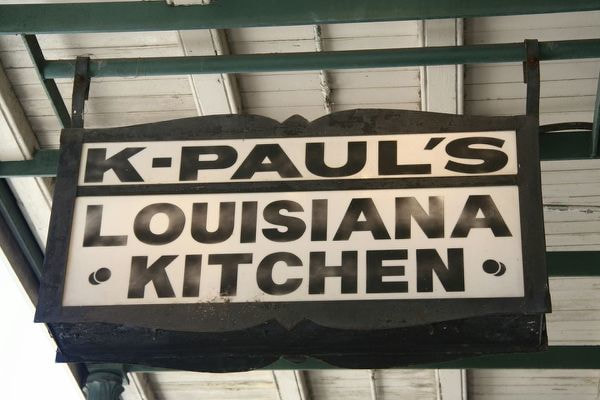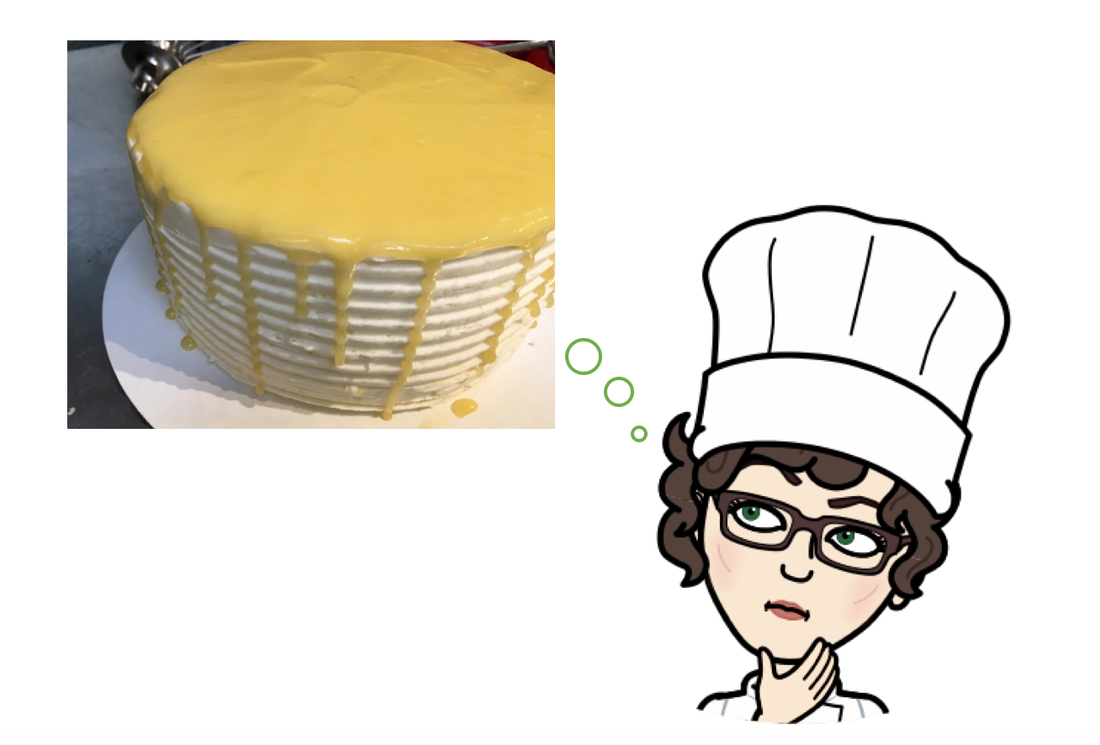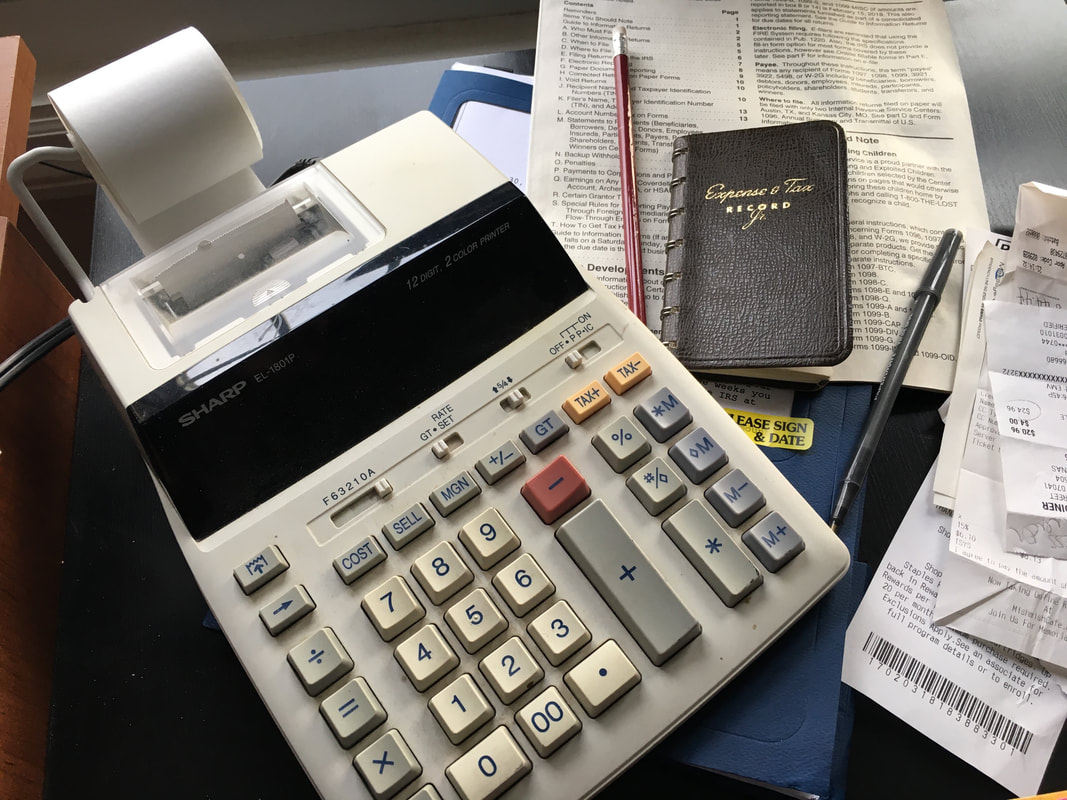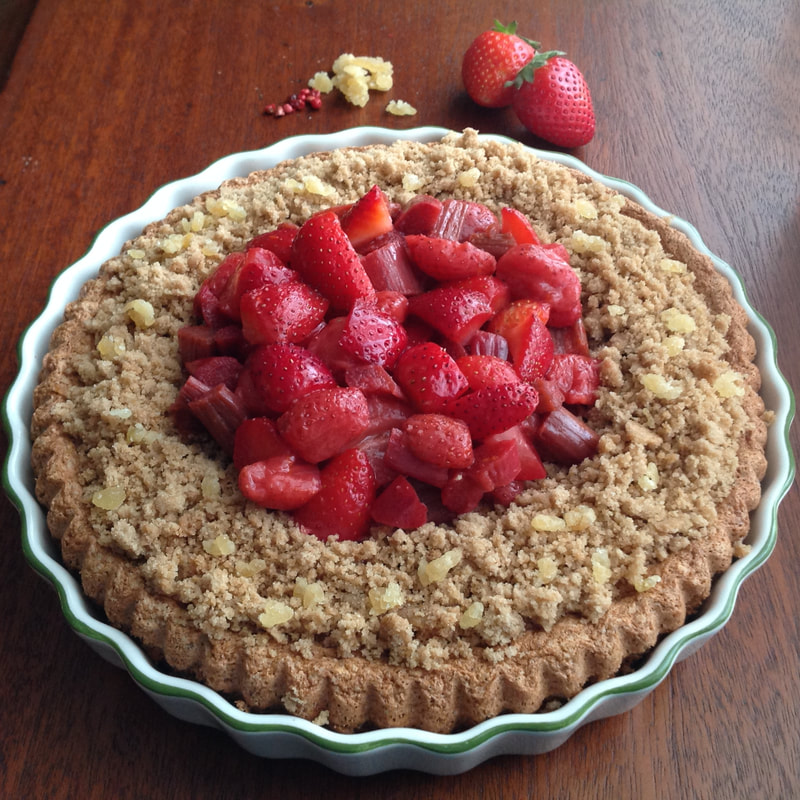|
The first time I met a straight-up, fresh strawberry pie that looked and tasted like just picked strawberries, was in New Orleans in the early 1980s. K-Paul’s Louisiana Kitchen was within big easy walking distance of the Saenger Theatre, where I spent my days backstage in a makeshift office. Setting aside a stack of fan mail addressed to Yul Brynner, I turned off the IBM Selectric typewriter, and scooted out the stage door into bright, Louisiana sunshine. At two o’clock in the afternoon, a line of locals and tourists snaked along Chartres Street. The cash-only restaurant accommodated 64 guests; we waited.
In 1981, the term ‘celebrity chef’ was just beginning to gain momentum within our popular culture. New Orleans boasted more than a few chefs aptly fitting the description. Chef Paul Prudhomme was garnering notoriety for introducing us to spicy, Cajun dishes, many of them blackened in screaming hot skillets. From the dining room of K-Paul’s, you could catch a glimpse of the kitchen. Through a veil of cayenne pepper and steam, Chef Prudhomme, dressed in kitchen whites and signature jaunty cap, worked against a backdrop of cavernous stockpots. The ingredients were blatantly fresh, the flavors as dramatic and impressive as the chef. This was particularly evident in the dessert course. I hesitated between the bread budding and the strawberry pie, opting for the latter. This was not a pie found dizzily spinning in a dessert carousel, with a crust tasting more of refrigerator than of butter. The strawberry pie served at K-Paul’s sprawled across an over-sized dessert plate. The triangular slice was huge, the filling just the slightest bit warm, struggling to contain itself within the confines of its substantial crust. The crust was rolled, not crimped, and quite tall, suggesting that the pie had been baked in a springform pan. It was hard to tell what was holding the pie together. Whole berries, rosy and freckle-faced, leaned against each other for support. With the first forkful, the fruit toppled, spilling across the plate, causing the overly generous dollop of white Chantilly cream to blush scarlet. Each time the tines of the fork came in contact with a berry, the fruit enthusiastically exploded, dotting both the white linen tablecloth and the napkin in my lap. Slightly embarrassed, I covered up the crime scene of strawberry stains with my dessert plate and a strategically placed napkin. Over my 4-week stay, I waited on line for several epic meals. Thankfully, strawberries remained in season. My K-Paul’s strawberry pie experience would forever impact the way I think about strawberries. The truth is, fresh strawberries enjoy an all too brief season, which is when they taste best; simply eaten, out of hand and unadorned. Unless you have the good fortune to find yourself in New Orleans during peak strawberry season, braving the line on Chartres Street.
0 Comments
The ladies of the Home Journal Dessert cookbook mean business when they tell me that outstanding pie fillings must be aligned with a complimentary piecrust. They even offer suggestions, such as tart green apples with cheddar cheese pastry. Also recommended is teaming cling peaches with a cornflake crust, and placing tart lemon filling in an airy meringue shell. While I do appreciate their input, I don’t always listen, preferring to create my own filling/crust combinations. It is reassuring to remember the humble in pie, focusing more on the taste, worrying a little less about the visual. Thankfully, cling peaches and cornflakes are currently out of my field of vision.
In the land of cakes, however, looks play a prominent role. This seems to have been the norm for decades, as evidenced by Chapter Three of the Ladies’ Home Journal cookbook, titled Festive Frostings. Egged on by the suggestion that I “don’t need to be an artist in order to design, build, and decorate a cake,” I recently took a brief pause from the rolling pin and picked up an icing spatula. In 10 concise pages, without benefit of a single illustration, the Journal cookbook offered not only a list of cakes and appropriate frosting suggestions, it provided the critical how-to’s needed to achieve frosting success. Never claiming to be an artist, I paid strict attention to the lessons within the pages. I was all ears and offsets. When the book was first published in 1964, classic, all-American frostings fell under four categories; traditional uncooked butter frosting, slightly temperamental Seven-minute frosting, fudge-like cooked frosting, and boiled frosting, which required the addition of scalding hot sugar syrup. Any other frostings were considered variations, created to add “glamour and flavor.” One frosting that warrants its own mention is the very popular Clever Judy frosting, a cross between traditional and cooked frosting. I worry that Judy, although popular, wasn’t as clever as we once thought. The frosting combines drifts of confectioners’ sugar with squares of unsweetened chocolate, melted butter, strong coffee, and vanilla. Judy’s frosting, like many early recipes, introduces an uncooked egg into the mix. The frosting is beaten over cracked ice to achieve its fudge-like consistency. Generations of frosting lovers swore by (and survived) Judy’s cleverness, but today, we might be hesitant to spike our frostings with an uncooked egg. Still, Judy’s frosting legacy lives on. Just imagine how popular Judy would have been in today's social media driven world. Hashtag clever, hashtag judy. Apparently, the authors of the Ladies’ Home Journal cookbook didn’t think to download instagram to their rotary dial Princess telephones, or they never would have limited their frostings to four paltry categories. Contemporary cake embellishment is infinite, as evidenced by our current fascination with Crayola-inspired rosettes, edible Unicorn horns, painterly buttercreams, and the gravitationally inspired drip cake. For home bakers in the 1960s, anything found dripping over the side of a cake was either intentional or the unfortunate result of placing tepid icing on a warm cake. Most cakes (once cooled) were dressed in great swoops of frosting, applied with a simple icing spatula and a flick of the wrist. On some occasions, a cake was best dressed in what was known as a glaze. There were two types of poured glazes, both heavy on the confectioners’ sugar. One was thinned with milk, the other with citrus juice. Lavish chocolate glazes were also popular, made by melting sweet chocolate with a tablespoon of butter, adding a pinch of salt, a hint of vanilla extract and just enough confectioners’ sugar to make a suitable glaze. Too much, and the glaze was more spreadable than pourable. Too little, and it ran over the sides with great abandon, barely coating the cake and creating puddles around the bottom. A cake suffering from glaze puddling required a feeble second attempt, generally resulting in an unwanted layer of wayward cake crumbs, which was anything but glamorous. Only certain cakes called out for glazes; chubby pound cake flecked with citrus zest and baked in a loaf pan. Dense, spicy gingerbread or fruit-studded cake, baked in a rippled Bundt pan, wore a glaze well. Impressively tall in a tube pan, a swirled marble cake, or a streusel-y coffee cake loved a good glaze. Glazes enhanced these simple, somewhat dowdy cakes, gussying up the outsides while adding an additional layer of flavor. Now and again, layer cakes were frosted and then glazed. The most dramatic combination was adding a chocolate glaze to a cake covered in fluffy white frosting. Liquid dark chocolate traveled across the top of the cake, spilling over the sides. Pausing briefly in swirls of vanilla frosting, it then gathered momentum before heading south, pooling along the bottom, circling the cake. Occasionally, the chocolate circle was interrupted by a pinky finger’s worth of a taste. (This could hardly be considered an icing malfunction because it was barely noticeable against the drama of the two icings.) Using the word 'drip' when referring to cakes would not enter our culinary vernacular for years. In fact, ‘drip’ does not find its way into the index of any of the dated dessert cookbooks crowding my over-filled bookshelves. Except for one. It is mentioned in my grandmother’s weathered edition of the Settlement Cookbook, in reference to making a good cup of coffee. The book was originally printed in 1901. Just imagine our grandmothers in blousy aprons and sensible shoes, running around their kitchens taking pictures of their baking triumphs. That visual is more hilarious than a pie plate filled with cornflakes and cling peaches. Eventually, today’s drip and Unicorn cake trends will be as fondly nostalgic as a 1960s Barbie doll standing waist-deep in blue buttercream. It’s pretty clear that the dessert world is as mercurial as spring in late March and early April. We forget all about Judy’s cleverness while we revisit and reinvent. Has-beens once considered humble become hot new trends. The question is, who will be next? Will she be a drip or a doll or a humble pie? I’ll be watching, rolling pin in one hand, offset spatula in the other, with just the slightest hint of chocolate on my pinky finger. My father’s mother, Minnie, was a businesswoman, with a good head for figures. This was before Quicken and Turbo Tax, when human beings were solid bookkeepers and Certified Public Accountants dominated the tax minefield. Armed with a freshly sharpened red and blue combination pencil, my grandmother could reconcile a checkbook to the penny and balance a double-sided ledger with ease. During spirited games of canasta, Minnie served as scorekeeper. Tallying numbers in her head, she then entered them on a floral multi-columned score pad. In between hands, the card party ladies nibbled on pastel Jordan Almonds and Planters Deluxe Mixed Nuts. I was not to inherit my grandmother’s head for figures nor her talent with knitting needles, but I do have a fondness for an occasional Jordan Almond and a good mixed nut. It seemed to me that anyone capable of deciphering the intricacies of a Vogue knitting book had to love numbers. Math was never my strong suit; fractions and reciprocals were painful, algebra and geometry, torturous. My rule was to avoid the slide rule at any cost, and take a pass on the protractor. One afternoon, over a black and white soda at the Pick Wick Luncheonette, my grandmother reached for the check and tried to explain how one figures out a gratuity. When she mentioned the words ‘decimal point,’ my eyes glazed over. My father shared his mother’s gift for numbers. Each year in late March/early April, tax season arrived in tandem with crocuses and daffodils. From a leather-backed swivel chair at his desk, my father would comb through an accordion file’s worth of receipts, gathering together stacks of pertinent papers. He would place them in an 8½” x 11” brown manila envelope, close it, secure the metal clasp, and label it “Taxes.” The envelope was starkly mysterious, sparking comments about deductions and expenses, federal and state withholdings, and what appeared to be the golden ticket of taxes, a refund. From my vantage point, the entire process was a bewilderment of little slips of paper, triplicate forms printed in teeny, tiny, typeface, and runaway rolls of white paper spilling out of a noisy machine. As my father added and subtracted, the incessant sputtering from the adding machine traveled through the ceiling of his office to my bedroom, interrupting the music playing on my Magnavox record player. My father’s role was important when it came to the details of tax preparation, but there was another integral player in the mix. In my mind, it seemed that our family's financial infrastructure and stability was tethered to “The Man On the Island.” The man was my father’s accountant, and the island was Long Island, where you would find Bob Slott, Certified Public Accountant, crunching numbers in his office. On a morning several weeks prior to April 15th, my father would take one last sip from a steaming cup of Chock full o’ Nuts coffee and pick up a briefcase weighty with tax paraphernalia. He and my mother would talk about the BQE and the Belt Parkway, words that sounded more like a secret code and less like a traffic report. Watching my father drive away felt a little bit like waving goodbye to someone setting sail on the Titanic. The magnitude of tax preparation would not hit me over the head until many years later. When faced with keeping track of my own travel expenses, I learned to appreciate both my grandmother's and my father's bookkeeping skills. Roaming up and down the east coast, off to the mid-west, across the country to the Pacific Northwest and further still to Canada, was a process requiring strict receipt keeping and note taking. My hope was to spend wisely, so both per diem and salary would yield mad savings. What ultimately saved my math challenged life was neither a red and blue combination pencil nor a handheld calculator. It was the spiral bound, pocket sized, black faux leather Expense & Tax Record Jr. Year after year, from Sunday through Saturday, I recorded all of my expenses, keeping copious notes of where and when and how much I was spending. Brown manila envelopes were jam-packed with airline, taxi, and restaurant receipts, shoeboxes were filled with pay stubs and bank statements. Squirreling away the comings and goings of my finances became the norm, without benefit of an Excel spreadsheet. In the end, fractions and geometry caught up with me. My everyday life now revolves around circles, weights, and measures. Yes, tax season is better left to the experts, (thank you, Mr. Sweet as Pie) but I’d like to see a Certified Public Accountant do what I do. Just try divvying up a 9” circle into seven even triangular slices. Then go ahead- ease the first piece out of the pie plate and onto a dessert plate, intact. To my knowledge, there’s no computer software for that. “Thank you for calling Whole Foods. Your call is important to us.” An endless loop of promotional advertising is telling me everything that is special about the grocery store. What isn’t special is being told that my call is the next one to be answered, only to hear another chorus of the previous message. I’m beginning to think I’m not so special. Eventually, Mike-in-Produce picks up. I’ve spoken to Mike many times by phone and quite a few times in person. He is a man of few words, requiring you to coax the information from him.
“Produce. This is Mike.” “Hi Mike. I’m wondering if you have any rhubarb today." “Rhubarb? No. No rhubarb.” “Any chance you will be getting some in for the weekend?” “The weekend? No.” “Any chance you can order a case for next week?” Silence. “Mike? Any chance you’ll be getting in some rhubarb next week?” “Rhubarb? Next week? Uh, no.” Now I’m silent and Mike is silent and there’s nothing but silence except for a static-y intercom in the background asking for Mike-in-Produce to pick up. Clearly it’s time for Mike to squash someone else’s produce dreams. Before hanging up, I ask once more, with feeling. “Maybe I’ll check in with you next week, Mike, in case you do receive a shipment. Okay?” “Ok. Next week. Call.” Click. When the calendar flips from March to April, I’m always rhubarb hopeful. Unable to secure a single stalk of pinky green pie plant is hugely disappointing. My freezer stash of 2017 rhubarb has dwindled down to one final Ziploc bag. When it’s gone, it’s gone, forcing me to hold my breath until Mike can come through with the goods. This is sad news, because in my mind, Passover and rhubarb have always been joined at the hip. Unable to look another macaroon in the eye, and with an empty dessert plate glaring from my faux marble counter, I chisel the plastic bag from the freezer with a slotted spoon. According to whencanieatbread.com, the holiday is scheduled to conclude at 8:10 pm Saturday evening. I have yet to fall off the matzoh wagon, but I’m teetering on the brink. Within cIose proximity of the bakery are two retail emporiums capable of pushing me over the edge. Not only does Bagel Chateau tempt with its doughy hole-in-the-middle-whole wheat-everything offering, I can practically reach and out and touch the very best pizza in town. The struggle is real, but finite, and in the grand scheme of things, fairly insignificant. The month of March brought more than Easter and Passover. It felt the need to burden with unforeseen snowfalls and free falls, stopping too many of my favorite women in their tracks. Fractures were as common as the snowflake symbol on my weather app, impacting wrists, ankles, and femurs. The aftermath of what Merriam-Webster defines as “the condition of unrestrained motion in a gravitational field,” is proving to be painful and tedious, as unwelcome as the snow rumored to arrive early this morning. As the first week of April winds down, it is unsettling to hear the contradictory sounds of snowplows and birdsong. The sobering news from the Whole Foods produce department forces me to unzip the weathered Ziploc bag, sending a paltry two cups of small dice rhubarb into a heavy bottomed saucepan. I add an equal amount of anemic strawberries, a generous handful of dark brown sugar, a good sprinkle of cardamom. Hitting the heat, the fruit melts into a puddle of crimson speckled with a little too much orange zest. Already the air is filled with more April, less March. Littering the floor with crumbs, I toss the empty matzoh box into the recycle. |
Archives
July 2024
Ellen GrayProfessional Pie-isms & Seasonal Sarcasm Categories |





 RSS Feed
RSS Feed